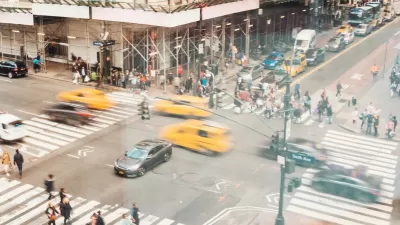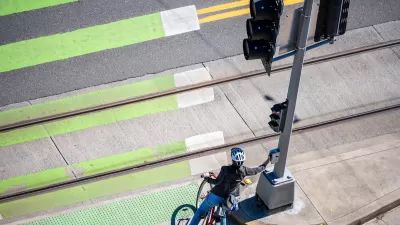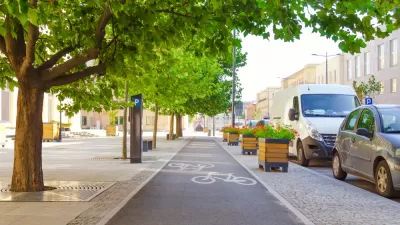Yesterday, Mayor de Blasio launched “Vision Zero”, a multi-agency effort to eliminate NYC's traffic deaths within a decade. With eleven deaths (seven of them pedestrians) already recorded in the new year, progress can't come soon enough.
With traffic deaths in New York City approaching falling homicide rates, Mayor Bill de Blasio is taking concrete steps to fulfill one of the most promising initiatives introduced during the mayoral campaign: “'Vision Zero' - a city with zero fatalities or serious injuries caused by car crashes on the streets of New York."
“'There is an epidemic of traffic fatalities and it can’t go on,' de Blasio said [at an event outlining the plan on Wednesday], noting that traffic fatalities are the leading cause of injury-related death for NYC children and that the city’s plunging homicide rate — 333 murders last year — is closing in on the number of traffic fatalities, which last year’s preliminary data puts at 286 people," reports Stephen Miller.
"In tone and substance, today’s announcement marked a notable departure from the days when NYC DOT was the sole city agency taking traffic violence seriously," he adds. "The interagency task force will convene over the next month before releasing a report with 'concrete plans' to carry out de Blasio’s Vision Zero campaign promises, namely: Dedicating more NYPD resources to traffic enforcement, improving design and enforcement along 50 dangerous corridors and intersections annually, expanding the number of 20 mph zones, and formulating a legislative agenda that includes securing home rule over traffic enforcement cameras."
FULL STORY: De Blasio Rolls Out a Multi-Agency Approach to Reducing Traffic Violence

Maui's Vacation Rental Debate Turns Ugly
Verbal attacks, misinformation campaigns and fistfights plague a high-stakes debate to convert thousands of vacation rentals into long-term housing.

Planetizen Federal Action Tracker
A weekly monitor of how Trump’s orders and actions are impacting planners and planning in America.

San Francisco Suspends Traffic Calming Amidst Record Deaths
Citing “a challenging fiscal landscape,” the city will cease the program on the heels of 42 traffic deaths, including 24 pedestrians.

Defunct Pittsburgh Power Plant to Become Residential Tower
A decommissioned steam heat plant will be redeveloped into almost 100 affordable housing units.

Trump Prompts Restructuring of Transportation Research Board in “Unprecedented Overreach”
The TRB has eliminated more than half of its committees including those focused on climate, equity, and cities.

Amtrak Rolls Out New Orleans to Alabama “Mardi Gras” Train
The new service will operate morning and evening departures between Mobile and New Orleans.
Urban Design for Planners 1: Software Tools
This six-course series explores essential urban design concepts using open source software and equips planners with the tools they need to participate fully in the urban design process.
Planning for Universal Design
Learn the tools for implementing Universal Design in planning regulations.
Heyer Gruel & Associates PA
JM Goldson LLC
Custer County Colorado
City of Camden Redevelopment Agency
City of Astoria
Transportation Research & Education Center (TREC) at Portland State University
Jefferson Parish Government
Camden Redevelopment Agency
City of Claremont





























